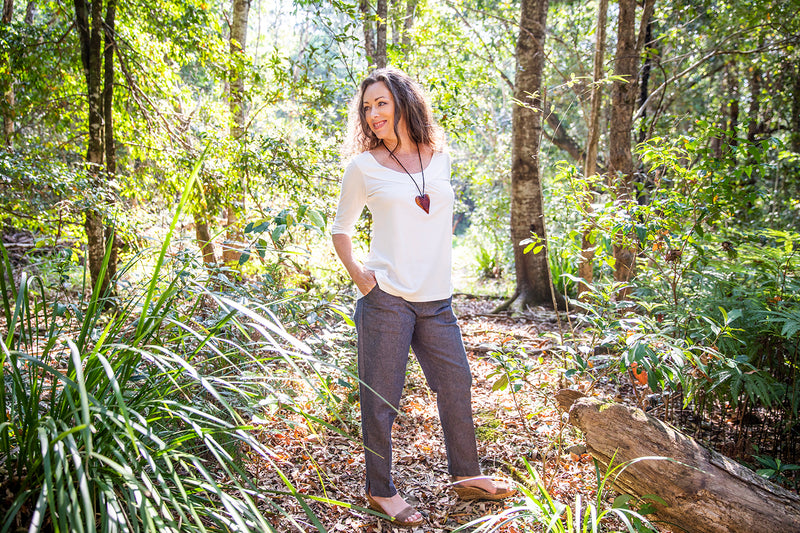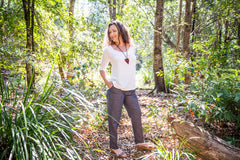
- Date :
TOP TIPS FOR CREATING AN ETHICAL AND SUSTAINABLE WARDROBE
by Marlene Howes

TOP TIPS FOR CREATING AN ETHICAL AND SUSTAINABLE WARDROBE
Sustainable and Ethical are very topical subjects with a lot of clothing brands using the words to describe their products. But what exactly does it mean to have an ethical and sustainable wardrobe and is it an expensive undertaking? Read on, to find out more on Slow Fashion and our Top 7 Simple Tips to Create an Ethical and Sustainable Wardrobe.
Sustainable Vs Ethical Clothing
Firstly, it is important to understand the true meaning of Sustainable Clothing. Put simply, it's the developing, making and marketing of clothing in a way that is mindful of the environment and society.
Whereas Ethical Clothing is clothing that is made whilst ensuring that workers get proper wages and fair working conditions. This of course applies to all processes along the supply chain.
So you can see then that the two terms overlap and ideally, both should apply to clothing that we buy.

What about Slow Fashion?
Slow Fashion is the term which unifies the sustainable and ethical clothing and encourages people to invest in well-made long lasting clothes. I believe that slow fashion is the future.
I wonder how many people are aware of just how wasteful the fashion industry is. Astoundingly, in Australia, over 800,000 tonnes of unwanted clothing and textiles goes into landfill every year!(Cleanup Australia)

Why is there so much clothing waste?
It's simple. Fast fashion caters to changing fashion tastes and this has led to a throwaway culture because clothing is so cheap to replace. The only way this cycle is going to change is if consumers change their behaviour and embody the mindset that encourages owning fewer, better quality clothing items.
Top 7 Tips for an Ethical & Sustainable Wardrobe.
These simple tips will ensure your clothing purchases are both ethical and sustainable, setting you on a successful pathway to embrace Slow fashion.

1. Re-imagining Existing Clothing Items
Try mending or changing the style of an existing clothing item….this is easy to do if you sew, otherwise find a good seamstress to help you. YouTube has heaps of explanatory videos if you need help. My eighties era black jacket required some minor alterations to the big shoulders and it is still my most worn piece in winter. Some sites I like to get inspiration from include Eco Age and The Spruce Crafts

2. Shop Second Hand
Look out for quality items at charity shops where you can often find good quality clothing. Sometimes they may need a little alteration to make them perfect, but by doing so you are effectively upcycling and keeping clothing out of landfill. Upcycled clothing or recycled clothing is a great way to dress well on a budget. For example, I recently found two lovely jackets in a local op shop that required a little work.

This gorgeous pure wool jacket was a perfect fit apart from the sleeves which were a little too short. I found some fabric that was a close match to the collar and pocket trim and inserted a strip into the sleeve to lengthen it.

Another wool jacket with too short a sleeve for me .The collar and buttons also needed updating. There was enough fabric in the turnup of the sleeve to lengthen it and I added on a strip of material to the existing lining inside the sleeve. I replaced the buttons and updated the collar. I love my refurbished jacket.
You can look at sites like good on you and Living Smart which offer some great tips for shopping second hand.
3. Seek out Sustainable and Ethical Brands
You can become a conscious consumer by supporting businesses that practise sustainable and ethical practices. By actively seeking out brands that care for the planet and all its inhabitants, we are making a change that collectively can make a difference. Look out for ethically accredited labels. To find out which Australian brands are ethical, you head to sites such as Ethical Clothing Australia, Good On You and Ethical Made Easy.
4. Follow the Care Label
Another small thing you should do is to care for your clothing: don’t ruin your clothing by not following the instructions on the Care Label. This way you will prolong the life and looks of your garment and make it go the extra mile

5. Choose natural Fabrics
As far as possible buy sustainable natural fabrics rather than synthetic fabrics. Where do natural fabrics come from? Natural fabrics are knitted or woven fibres that occur in our natural world and include cotton, linen, jute, hemp, wool and bamboo. Natural fabrics such as linen, hemp, cotton and wool and bamboo are eco-friendly as they break down and decompose at the end of their natural life whereas synthetics, such as polyester, nylon and acrylic are petroleum and chemical based and can take up to 200 years to break down, all the while releasing toxins into the environment.( Compare Ethics)

6. Start a capsule Wardrobe
Develop a capsule wardrobe so that you can mix and match multiple items. I think we should all make it a goal to own fewer things …. It’s a tough one, I know. If you can, aim for around 12-15 core items to start. A good capsule wardrobe will introduce simplicity to choosing a great looking outfit. It should be formed from good quality clothing that can be dressed up or down, mixed and matched and layered to suit many seasons to come.
This collection of 15 garments can be mixed to make up over 30 outfits. It can be further diversified by the addition of scarves, beads and another jacket or pullover. Try experimenting with your existing wardrobe and you might be surprised at what you can do.

Sacha wearing clothing from our own ethically accredited brand Pankina Clothing
7. Gift, Donate or Recycle
If there is something you just don’t wear any longer; give it to a charity shop if it’s still in a good condition. Old, worn out clothing that can’t be donated can be recycled thus preventing it going to landfill. I have found a company called Upparel which recycles old clothing. I am also able to send fabric scraps from my sewing endeavours to them.
In summary,
I really think that conscious consumers are going to be the key drivers of change in our increasingly fragile world. Issues like climate change, pollution and even the COVID pandemic are creating an awareness that everything is interconnected and even small changes that we implement can and should make a difference.
At Pankina, we seek to support growing consumer demand for ethical and sustainable products. The way we dress can send a message to the world about who we are and what we stand for and we want to be part of that move towards quality and sustainability. We love fashion and the way it can express our creativity but we also believe that it can be done mindfully. Pankina is proud to be an ethically accredited label with Ethical Clothing Australia.
Marlene, Owner at Pankina.
Browse our ethical and sustainable clothing range.



 Add to Cart
Add to Cart
Leave a comment